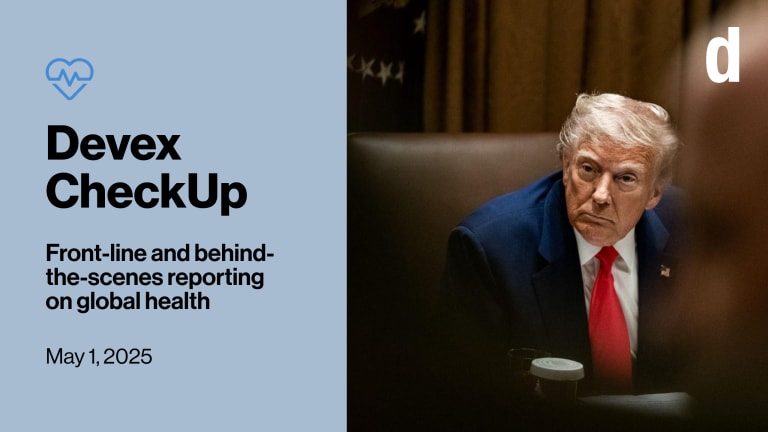
There’s been a lot of talk about transparency in international aid, what it can achieve and who it will benefit. A range of stakeholders is working on this issue, and a lot of progress has been made by donors and their partner organisations alike. In a recent contribution to the Full Disclosure blog, Claudia Elliot looked at why transparency is so important and outlined what it could mean for us all.
But what role does open data play in transparency, and what impact can it have at a grassroots level?
Open data is integral to transparency; governments are increasingly releasing data as a way to become more accountable and to combat societal issues. This article, by technology specialist Tariq Khokhar, takes a look at different types of open data and considers why it’s important.
Behind the scenes, much work has been done to establish an international process for releasing open data; the International Aid Transparency Initiative was launched 2008 in Accra and so far has 18 donor signatories and 18 endorsements from partner countries. These bilateral and multilateral donors, in addition to recipient countries, have agreed to publish the details of aid funding in an open, standard format.
This week, key players in the initiative meet to agree on the final set of standards for publishing aid data. Ahead of this, the U.K. Department for International Development became the first donor to release large sections of its aid data in line with the IATI standards. The data released by DfID is in a raw format; this is the first step in making open data accessible.
But it’s not enough to simply release raw data, which more often than not is inaccessible for the majority of users. We need developers and technology architects to make this information meaningful, by creating tools and visualisations that turn raw data into readable formats and visualisations.
Luckily, there are plenty of data enthusiasts out there who are keen to take on such a challenge. Police.uk, launched earlier this month, is a great example from the U.K. of how open data released by government can improve citizen’s knowledge of issues in their area. There may have been some hiccups on release, but ultimately it’s a good indication of the potential benefits that open data can bring. The creation of similar systems in a development setting could allow stakeholders at every level to gain access to timely and accurate information on development projects.
>> Donors to Finalize Standards on Publishing Aid Information>> DfID Takes Lead in Aid Transparency Campaign
What next?
But what about examples where increased access to data have been used to support development at a community level?
In 2005, the World Bank’s Ritva Reinikka and Jakob Svensson set out to test how access to data could improve communities’ access to services. They launched a newspaper campaign in Uganda that aimed to reduce the amount of money diverted away from education funds. It provided parents with data to enable them to monitor how funds from a large educational grant were spent. Their inquiries showed that from the total grant disbursed through the local government, only 20 percent actually reached schools, with some receiving much lower amounts. By making information available about how much the central Ministry was releasing, and how much the schools were receiving, they were able to calculate how much of the funds were diverted by officials at the local level.
National newspapers published details of monthly transfers to districts and, through this tracking system, members of the community were encouraged to monitor amounts received locally. This bottom-up approach meant that citizens were able to hold their local authorities to account, increasing the amount of grant money received by 60 percent. As a result, education services improved.
A follow-up study, this time focusing on the effects of transparency on health care in Uganda, found similar results. In 2009, Svensson and Martina Björkman randomly assigned community health clinics to receive published “report cards” and hold NGO-organised public meetings on the quality of the clinics’ health care. The “results of this transparency treatment rivaled the effects of the best health interventions, such as expensive new medicines, equipment and procedures. Waiting time for care decreased, absenteeism among doctors and nurses plummeted, clinics got cleaner, fewer drugs were stolen, 40-50 percent more children received dietary supplements and vaccines, health services got used more and, powerfully, 33 percent fewer children died under the age of five. This amounted to 550 saved lives in a small area of Uganda encompassing merely 55,000 households.
These examples show us how open data and transparency in aid can really be effective. Imagine the potential benefits if open data was prolific; it would make governments, donors and implementation agencies far more accountable to those they purport to serve.
Of course, this is a long process, involving several stages and willing actors, but evidence and demand suggest it’s already begun. This week’s meeting of IATI members may be the first step that takes us from theory into reality… and the future looks promising.
What are your thoughts on aid transparency and IATI’s work? Let us know your thoughts – and watch this space for coverage later this week of outcomes from IATI’s Feb. 9 gathering.
Read more of Full Disclosure: The aid transparency blog, written by aid workers for aid workers.




